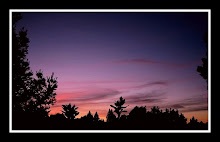It is imperative to understand what "aperture" means in photography. It is a mechanism in your camera which controls the amount of light that enters through your lens. The aperture functions like the iris in your eyes.
In the dark, the iris contracts the pupil to allow more light to enter the eyes for vision. Alternatively, when the iris is exposed to too much light, it constricts the pupil preventing excess light from entering the eyes.
So relate the above example of the eyes to your camera aperture. When shooting in the dark, more light is required, therefore, a larger aperture is require and vice versa. The aperture readings are usually available on the lens of the camera. The aperture for lenses usually read as follows, f1.4, f1.8, f2.8, f3.5, f5.6, f32 and so forth. The larger the number the smaller the aperture. Just for your information aperture is sometimes referred to as "f-stop". So don't freak out when you hear this term.
You probably are asking yourself right now, why am I getting a science lesson and the answer is quite simple. Well, the amount of light that enters the camera will determine the exposure of your photo. Too much light would result to over-exposure, similarly photos taken in poor lighting conditions will result to under-exposure.
Look out for my next tutorial on Aperture Priority Mode. Have a great aperture day!!
In the dark, the iris contracts the pupil to allow more light to enter the eyes for vision. Alternatively, when the iris is exposed to too much light, it constricts the pupil preventing excess light from entering the eyes.
So relate the above example of the eyes to your camera aperture. When shooting in the dark, more light is required, therefore, a larger aperture is require and vice versa. The aperture readings are usually available on the lens of the camera. The aperture for lenses usually read as follows, f1.4, f1.8, f2.8, f3.5, f5.6, f32 and so forth. The larger the number the smaller the aperture. Just for your information aperture is sometimes referred to as "f-stop". So don't freak out when you hear this term.
You probably are asking yourself right now, why am I getting a science lesson and the answer is quite simple. Well, the amount of light that enters the camera will determine the exposure of your photo. Too much light would result to over-exposure, similarly photos taken in poor lighting conditions will result to under-exposure.
Look out for my next tutorial on Aperture Priority Mode. Have a great aperture day!!






1 comment:
Happy blogging...I liked the nice simple style of your tutorial... hoping to read more soon.
Post a Comment